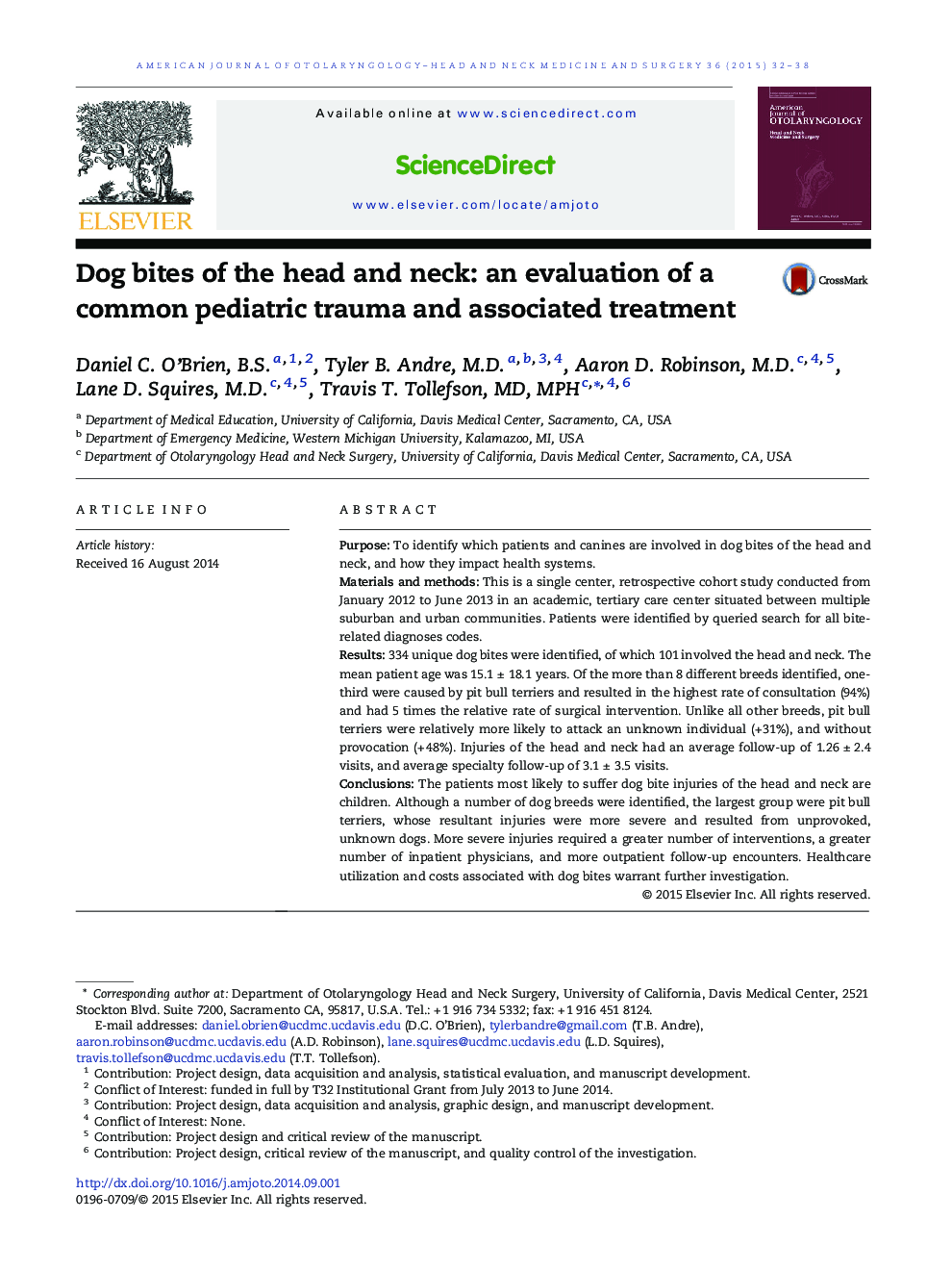| Article ID | Journal | Published Year | Pages | File Type |
|---|---|---|---|---|
| 4103002 | American Journal of Otolaryngology | 2015 | 7 Pages |
PurposeTo identify which patients and canines are involved in dog bites of the head and neck, and how they impact health systems.Materials and methodsThis is a single center, retrospective cohort study conducted from January 2012 to June 2013 in an academic, tertiary care center situated between multiple suburban and urban communities. Patients were identified by queried search for all bite-related diagnoses codes.Results334 unique dog bites were identified, of which 101 involved the head and neck. The mean patient age was 15.1 ± 18.1 years. Of the more than 8 different breeds identified, one-third were caused by pit bull terriers and resulted in the highest rate of consultation (94%) and had 5 times the relative rate of surgical intervention. Unlike all other breeds, pit bull terriers were relatively more likely to attack an unknown individual (+ 31%), and without provocation (+ 48%). Injuries of the head and neck had an average follow-up of 1.26 ± 2.4 visits, and average specialty follow-up of 3.1 ± 3.5 visits.ConclusionsThe patients most likely to suffer dog bite injuries of the head and neck are children. Although a number of dog breeds were identified, the largest group were pit bull terriers, whose resultant injuries were more severe and resulted from unprovoked, unknown dogs. More severe injuries required a greater number of interventions, a greater number of inpatient physicians, and more outpatient follow-up encounters. Healthcare utilization and costs associated with dog bites warrant further investigation.
